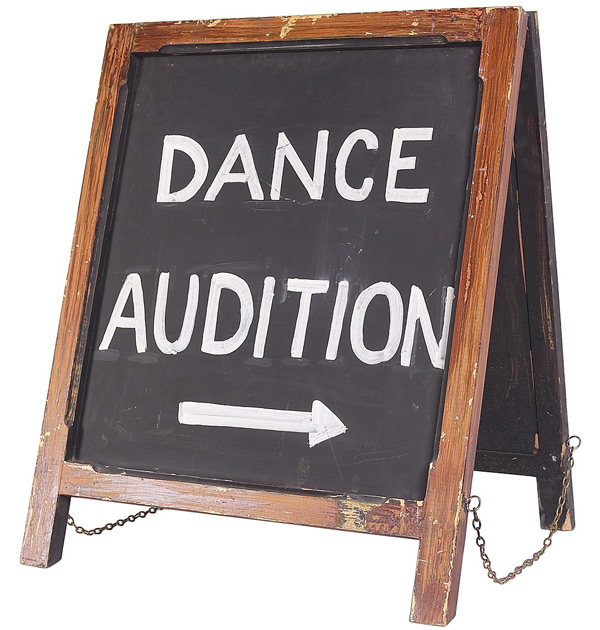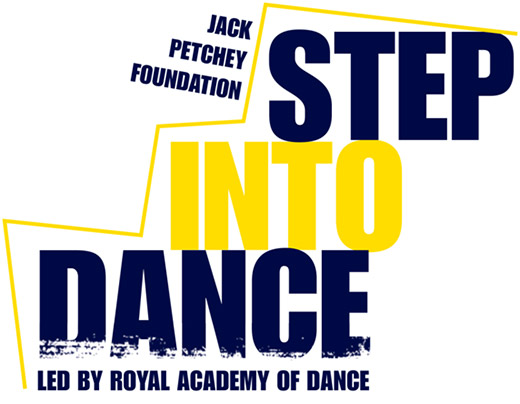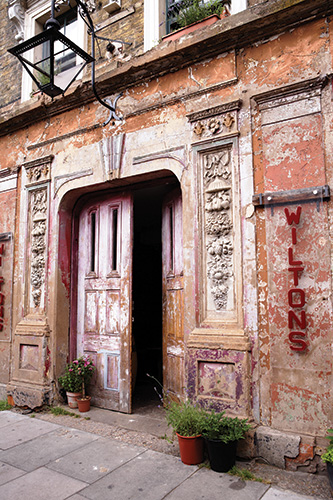
Carolyn Bolton was born in Columbia, USA, and trained at South Carolina Governor’s School for the Arts and Humanities, the Martha Graham School of Contemporary Dance and University of South Carolina. She joined Rambert in 2013 after working with the Wideman/Davis Dance Company, Unbound Dance Company, and Spartanburg Ballet.
Carolyn’s career highlights include performing with New York City Ballet in the USC Dance Company’s annual gala and featuring in the 2007 ETV documentary Sketches from Chronicle for the Martha Graham Company.
Carolyn has also choreographed works during the South Carolina Governor’s School for the Arts and Humanities year round programme, the University of South Carolina academic year and Summer Program, Benedict College After School Dance Program, as well as works for Litchfield Dance Arts Academy. In addition, Carolyn has choreographed solos for numerous dance competitions including the prestigious Youth America Grand Prix Competition.
When did you begin dancing, where and why?
I began dancing quite late, aged eleven. I auditioned for a dance programme at my local middle school in South Carolina and was accepted. Initially I was inspired to move by images on the television ranging from Olympic events, such as figure skating and gymnastics, to more fantasy based programmes like the Power Rangers. However it was seeing Julie Kent from American Ballet Theatre perform Le Corsaire that ultimately sparked my interest. I loved the music, costumes, and the beauty of each step and knew I wanted to dance too.
What were your early years of dancing like?
When I began dancing it was only for fifty minutes a day, five days a week. My school did an excellent job of exposing me to various modern techniques as well as classical ballet. They also brought in professionals, such as Carolyn Adams, to work with us and set established pieces like Donald McKayle’s ‘Rainbow Etude’. My teacher also encouraged me to take classes outside of school and provided me with free after school lessons at a local studio.
How long have you been performing? Did you start young?
I have been performing for about fourteen years now. I started performing shortly after I started. My school would put on several productions a year, including one large production at the end of each year. I also had the opportunity to participate in performances with local companies in South Carolina.
Where did you train and what was a typical day like?
I did my pre-professional training at the South Carolina Governor’s School for the Arts and Humanities. A typical day for me included a ballet technique class in the morning, followed by a pointe class, and three hours of repertory. I would then complete my academic course work and continue rehearsals into the evening. After rehearsals I would have about two hours of free studio space, so I would continue to work on my own choreography or improving technical skills. Each Saturday I would take either a Horton, Cunningham, or Jazz class in addition to my normal ballet class and rehearsal schedule.
What is a typical day like now?
A typical day now consists of a morning technique class either ballet or contemporary, followed by five hours of rehearsals.
Do you still take classes? How do you keep on top of your technique?
I try to stay on top of my technique by taking daily classes provided by Rambert, as well as maintaining pilates exercises to target my weak areas.
What’s the best part about performing?
The best part of performing for me is the silence and moment of stillness I feel when I step on the stage. It’s an indescribable feeling to have all the focus on you. It’s also a lot of pressure, and that knowledge of everyone watching you gives you an adrenaline rush which is unmatched by any other experience.
What would you say was your greatest achievement to date?
My greatest achievement to date is to be dancing for Rambert. I have had the privilege and honour to work with so many artists in America, but Rambert has truly opened a new world of dance to me. It is a pleasure to be in the midst of such talented and diverse artists each day.
Which part of dance do you enjoy the most?
I truly enjoy taking class every morning. For me class is a form of meditation; a way of centering the body, reconnecting with myself and getting in touch with how I am feeling each day. Class allows me to take risks and improve on my technique and artistry prior to stepping on stage.
What advice would you give to someone aspiring to be part of the dance industry?
I would advise someone aspiring to enter the dance industry to cherish every moment and opportunity presented. The dance world can be very fickle but it is vital to remember that ultimately, you are in charge of your destiny. It is important to persevere even when it appears things may not work out. By maintaining a positive attitude and looking for solutions rather than problems, achievement is inevitable.
What’s next for you?
I am looking forward to more touring and performing with Rambert. I am also interested in further exploring my choreographic vision while simultaneously teaching for companies/schools.
Photo © Astrid Julen
 Making the transition from student to professional is a hazy one – dancers can gain employment whilst in full-time training and there are factors that can help navigate the transition. Aside from having talent and passion, dancers need to be self-motivated, persistent and professional. It’s also much easier to survive if you are liked by your peers and professionals, and have a reputation of working hard and making the most of every opportunity.
Making the transition from student to professional is a hazy one – dancers can gain employment whilst in full-time training and there are factors that can help navigate the transition. Aside from having talent and passion, dancers need to be self-motivated, persistent and professional. It’s also much easier to survive if you are liked by your peers and professionals, and have a reputation of working hard and making the most of every opportunity.
 While major injuries are devastating, it is often the smaller injuries which have more of an effect on a dancer’s wellbeing, such as being covered in bruises or burning the feet constantly. Dancers can become desperate for a cure, such as for cuts, split skin, blisters and bruises.
While major injuries are devastating, it is often the smaller injuries which have more of an effect on a dancer’s wellbeing, such as being covered in bruises or burning the feet constantly. Dancers can become desperate for a cure, such as for cuts, split skin, blisters and bruises. Eighteen youth dance groups from mainstream and SEN secondary schools across London have been selected to perform at Sadler’s Wells in London’s biggest celebration of youth dance, taking place on 5 July.
Eighteen youth dance groups from mainstream and SEN secondary schools across London have been selected to perform at Sadler’s Wells in London’s biggest celebration of youth dance, taking place on 5 July. It is often a revelation to dance in a studio without mirrors. Some dancers may feel uncomfortable and uncertain at first not to have mirrors, as they are not to be able to see what they are doing and check they are performing the exercises correctly. Despite this many would argue that the movement will feel right for the body, and mirrors are not required to feel this as they encourage dancers to ‘make shapes’ rather than initiate the movement from an internal source.
It is often a revelation to dance in a studio without mirrors. Some dancers may feel uncomfortable and uncertain at first not to have mirrors, as they are not to be able to see what they are doing and check they are performing the exercises correctly. Despite this many would argue that the movement will feel right for the body, and mirrors are not required to feel this as they encourage dancers to ‘make shapes’ rather than initiate the movement from an internal source. In both the musical theatre and acting industries – in fact, any of the performing arts – securing an agent can be tricky, and almost as difficult as securing jobs! Some graduates from performing colleges leave with agents already secured; most of these are the agency that works alongside the institution and the graduates are automatically added to their books. Other instances of securing agents upon graduation is a direct result of the students inviting agents to their final college showcases, and being taken on that way.
In both the musical theatre and acting industries – in fact, any of the performing arts – securing an agent can be tricky, and almost as difficult as securing jobs! Some graduates from performing colleges leave with agents already secured; most of these are the agency that works alongside the institution and the graduates are automatically added to their books. Other instances of securing agents upon graduation is a direct result of the students inviting agents to their final college showcases, and being taken on that way. The iconic East London performance venue Wilton’s Music Hall is set to host a three-day dance festival this autumn in order to showcase new work by emerging artists, and forge relationships for future collaborations. In addition, the organisation is also looking for potential companies to partner with on future commissions across different dance forms, widening their reach to new and potential dance audiences who may have not engaged with the music hall venue before.
The iconic East London performance venue Wilton’s Music Hall is set to host a three-day dance festival this autumn in order to showcase new work by emerging artists, and forge relationships for future collaborations. In addition, the organisation is also looking for potential companies to partner with on future commissions across different dance forms, widening their reach to new and potential dance audiences who may have not engaged with the music hall venue before. Young people in the capital are asked to watch, learn, create and perform this summer as part of The Place’s summer activities throughout July. It is a month packed with exciting dance for children, young people and families. The hugely popular Something Happening For Kids family festival then returns on 19 July to take the under 10s and their families on a whirlwind tour of dance. For older children there is Summer Fusion, a five-day summer school for young people aged 6-16, which starts on 28 July.
Young people in the capital are asked to watch, learn, create and perform this summer as part of The Place’s summer activities throughout July. It is a month packed with exciting dance for children, young people and families. The hugely popular Something Happening For Kids family festival then returns on 19 July to take the under 10s and their families on a whirlwind tour of dance. For older children there is Summer Fusion, a five-day summer school for young people aged 6-16, which starts on 28 July. Kids Week is back for 2014 with a bang, offering an incredible 36 London shows with free tickets and amazing exclusive activities for children throughout the whole of August. This year sees everything from hilarious page to stage adaptations to dramatic long-running musicals each taking their place in the line-up.
Kids Week is back for 2014 with a bang, offering an incredible 36 London shows with free tickets and amazing exclusive activities for children throughout the whole of August. This year sees everything from hilarious page to stage adaptations to dramatic long-running musicals each taking their place in the line-up.
 As a passionate young dance student, it can be hard to conceive of a life without dance. Perhaps you’ve been injured, or can’t get a job or even discovered a full dancing life just isn’t for you. You may be able to return to dancing, and if you do your body will not have forgotten, and you’ll be able to bring more to your dancing than previously.
As a passionate young dance student, it can be hard to conceive of a life without dance. Perhaps you’ve been injured, or can’t get a job or even discovered a full dancing life just isn’t for you. You may be able to return to dancing, and if you do your body will not have forgotten, and you’ll be able to bring more to your dancing than previously.